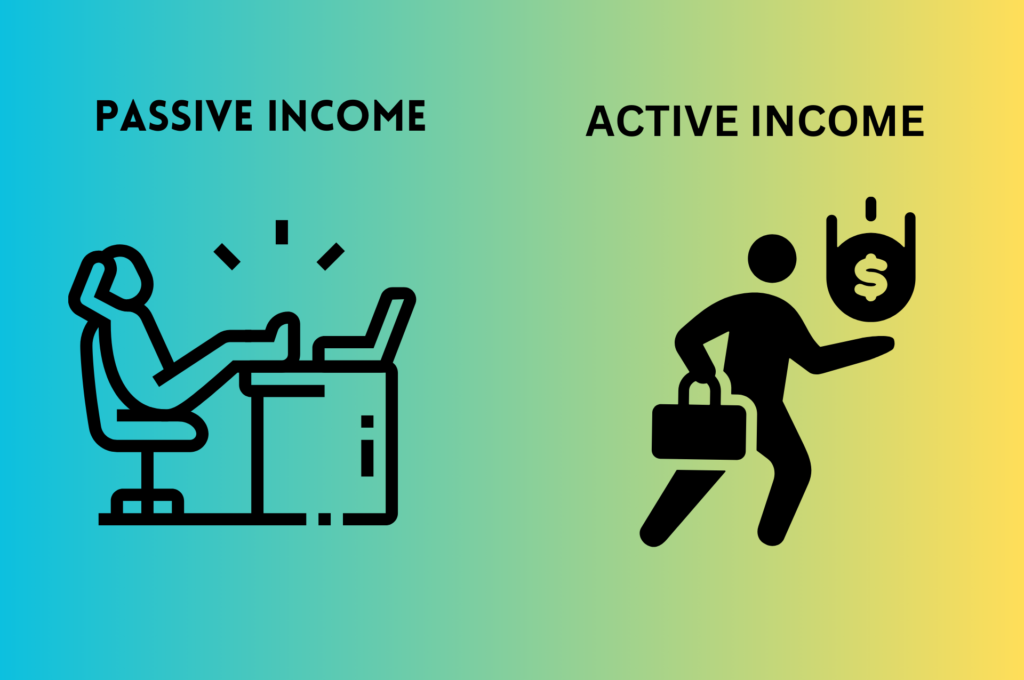Investing can be a powerful tool to grow your wealth, but choosing the right strategy is crucial. Two of the most popular investment strategies are passive investing and active investing. Passive investing focuses on long-term growth with minimal buying and selling, while active investing involves frequent trades to capitalize on market fluctuations.
In this article, we’ll explore the key differences, benefits, and drawbacks of passive and active investing, helping you decide which strategy suits your financial goals and risk tolerance.

What is Passive Investing?
Passive investing is a strategy that aims to generate steady returns by mimicking the performance of a market index, such as the S&P 500. It involves buying and holding investments over the long term, minimizing trading activity.
Key Features of Passive Investing:
- Low Costs: Minimal trading reduces transaction fees and management costs.
- Market Tracking: Investments mirror market indices like ETFs (Exchange-Traded Funds).
- Long-Term Focus: Designed for steady, compounding growth over time.
Pros of Passive Investing:
- Cost-effective with lower fees.
- Simplicity in execution.
- Historically, passive funds often outperform actively managed funds over the long term.
Cons of Passive Investing:
- Limited flexibility during market downturns.
- No potential to outperform the market.
What is Active Investing?
Active investing involves buying and selling assets frequently to take advantage of short-term price fluctuations. This strategy relies heavily on market analysis, research, and sometimes intuition to make informed decisions.
Key Features of Active Investing:
- Flexibility: Adjusts to market changes in real-time.
- Potential for Higher Returns: Aims to outperform the market.
- Requires Expertise: Involves in-depth market knowledge and analysis.
Pros of Active Investing:
- Opportunity to beat the market.
- Flexibility to respond to market volatility.
- Can capitalize on niche or undervalued investments.
Cons of Active Investing:
- Higher costs due to frequent trading.
- Time-intensive and requires expertise.
- Greater risk compared to passive strategies.
Key Differences Between Passive and Active Investing
| Aspect | Passive Investing | Active Investing |
|---|---|---|
| Goal | Match market performance. | Beat market performance. |
| Management Style | Hands-off, buy-and-hold. | Hands-on, frequent trades. |
| Costs | Low expense ratios and transaction fees. | Higher fees due to active management and trading. |
| Risk | Lower risk, aligned with market movements. | Higher risk due to speculative trading. |
| Time Commitment | Minimal. | Significant research and monitoring required. |
| Returns | Typically consistent with market averages. | Potential for higher returns but not guaranteed. |
When to Choose Passive Investing
Passive investing is ideal for individuals who:
- Have a long-term investment horizon.
- Prefer a hands-off approach.
- Want to minimize costs and management time.
- Are satisfied with market-average returns.
Examples of Passive Investments:
- Index funds.
- ETFs.
- Target-date funds.
When to Choose Active Investing
Active investing is better suited for those who:
- Have the time and expertise to monitor the market.
- Are comfortable with higher risks.
- Seek to outperform the market.
- Are interested in niche or emerging sectors.
Examples of Active Investments:
- Actively managed mutual funds.
- Stock-picking strategies.
- Hedge funds.
Blending Both Strategies: The Best of Both Worlds
Many investors find value in combining both strategies. For instance:
- Core-Satellite Approach: Use passive investments for the core portfolio to achieve stability, while allocating a smaller portion to active investments for potential higher returns.
- Rebalancing: Periodically adjust the portfolio to maintain the desired balance between active and passive investments.
Costs and Returns: A Comparative Look
Passive Investing Costs:
- Expense Ratios: Typically under 0.20% for ETFs.
- No active management fees.
Active Investing Costs:
- Management Fees: Often 1% or higher.
- Trading Costs: Can erode returns due to frequent buying and selling.
Performance Comparison:
Historical data shows that passive investing tends to outperform active strategies over the long term due to lower costs and the difficulty of consistently beating the market.
Current Trends in Investing Strategies
Rise of Passive Funds:
ETFs have gained immense popularity due to their simplicity and cost-effectiveness. As of 2024, passive funds manage over $9 trillion globally.
Active Management Evolution:
While active funds have seen a decline in market share, innovations like AI-driven trading and thematic funds are reviving interest in active strategies.
Conclusion
Choosing between passive and active investing ultimately depends on your financial goals, risk tolerance, and level of involvement. Passive investing offers a cost-effective, hands-off approach suitable for long-term growth. On the other hand, active investing appeals to those with market expertise and a desire to outperform benchmarks.
For most investors, a blended approach combining both strategies can provide diversification, stability, and growth potential. By understanding your objectives and weighing the pros and cons of each strategy, you can create a portfolio that aligns with your financial aspirations.
FAQ
1. What is the main difference between passive and active investing?
- Passive investing aims to match market performance with minimal trading, while active investing seeks to outperform the market through frequent trades and analysis.
2. Is passive investing better for beginners?
- Yes, passive investing is ideal for beginners due to its simplicity, lower costs, and reduced risk.
3. Can active investing guarantee higher returns?
- No, while active investing offers the potential for higher returns, it also comes with increased risks and no guarantees of outperformance.
4. How do I decide which strategy is right for me?
- Assess your financial goals, risk tolerance, and time commitment. Passive investing suits long-term, low-maintenance goals, while active investing requires market expertise and active participation.
5. Are ETFs considered passive investments?
- Most ETFs are passive investments that track market indices, but there are actively managed ETFs available as well.
6. Can I combine passive and active strategies?
- Yes, combining both strategies allows you to balance stability with growth potential, leveraging the advantages of each approach.




